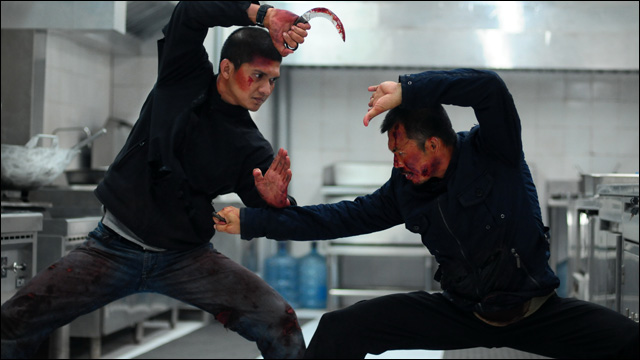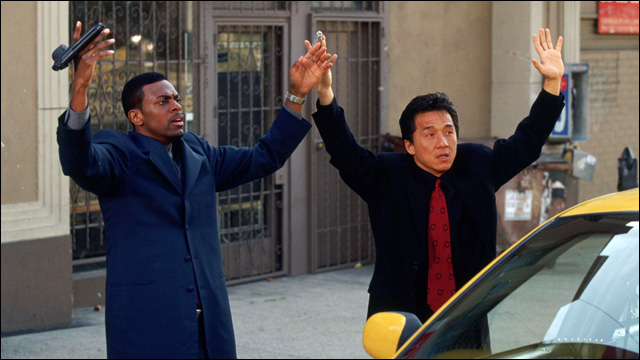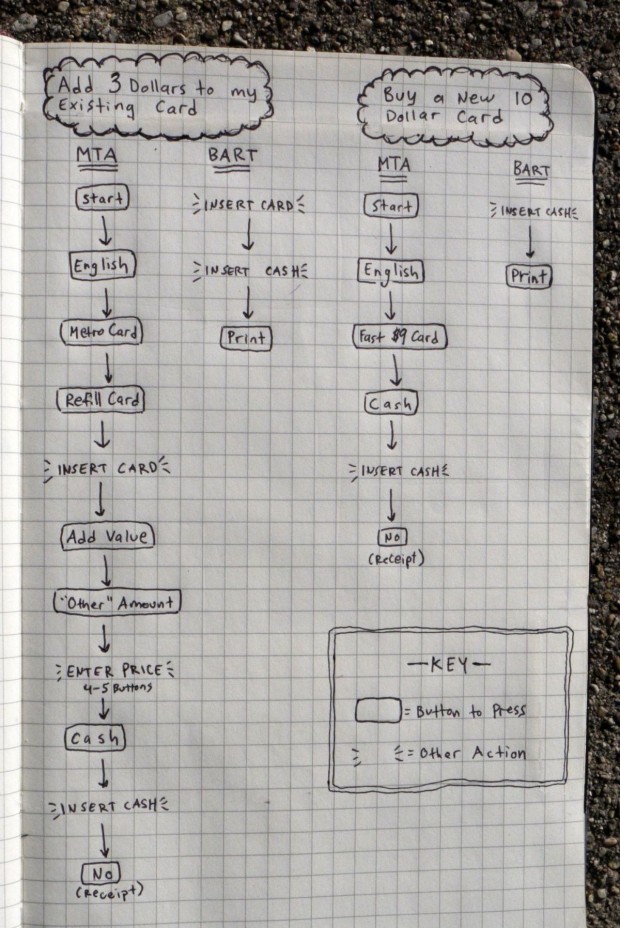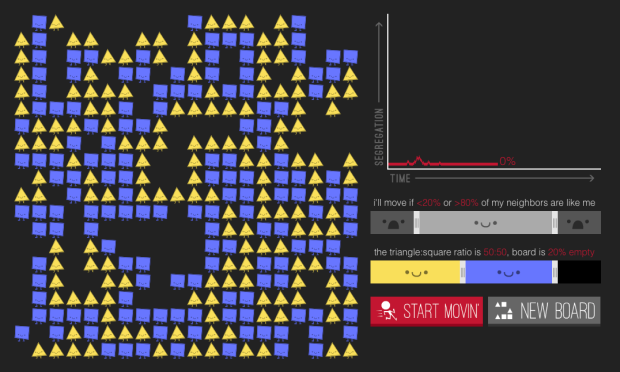Shared posts
Fusion on VCs investing in their partner's startups
Mathematics of love
Mathematician Hannah Fry talks about love in terms of three "mathematically verifiable" tips: how to win at online dating, when to marry, and how to avoid divorce.
Perhaps useful for the algorithmically-inclined.
There's also a book version of Fry's talk.
Tags: dating, Hannah Fry, lunch talk
Cold-brew chocolate: advanced topics

Ever since I blew my mind by cold-brewing ground cacao nibs, I've been experimenting with the process, and have discovered some amazing variations on the formula.
Read the rest
Campus ghost stories and real American history
The University of Pennsylvania is pretty old (by American standards), and with age comes ghost stories. But the ghost hunters of the Penn Ghost Project have still come up empty.
I do not believe in ghosts, but I’m still happy about this project:
“We want to understand it as a sociological reality and a cultural reality,” said Justin McDaniel, a professor and chair of the religious studies department at Penn. “It should be given a forum where people can talk about it.”
McDaniel’s group calls itself “the Penn Ghost Project” and later this semester, students will begin recording ghost stories on campus. The goal: to create an online ghost story archive for the ages.
“We want to kind of map out the ghosts at Penn, where are people saying they are,” said McDaniel, 42, a former Buddhist monk who isn’t sure whether he believes in ghosts. “If it goes well, we’ll start mapping the ghost history of Philadelphia, which is extensive, probably more extensive than any city in the country, just because it’s big and it’s old.”
I do not believe in ghosts, but I do believe in ghost stories. Searching for ghosts is bound to be a fruitless waste of time. But searching for ghost stories can be important and meaningful.
My alma mater is a few stops west of Penn on the R5 line. Eastern University has one decent campus ghost legend, but it’s basically a storytelling exercise working from a Hollywood template. The same is true for the much better ghost story across the street at Cabrini College.
But the best campus ghost story around here is even further west along the original Main Line railroad — at Immaculata University in Malvern. That story involves the ghosts of the workers who built that railroad — legends of spectral Irish laborers dancing in the woods.
That story, it turns out, is a genuine haunting. I don’t mean that actual ghosts are haunting those woods, but that the community had, for more than a century, remained haunted by the memory of an otherwise forgotten tragedy — and an otherwise forgotten crime. The memory of that crime was retained in folklore — in ghost stories.
And those ghost stories helped two Immaculata professors locate a mass grave. Duffy’s Cut, along the rails in the Malvern woods, is the burial site of 57 Irish immigrants. They landed in Philadelphia in 1832 and signed on as railroad workers with a contractor named Duffy. Six weeks later, they were all dead.
The historical marker (about 8 miles from where I’m sitting) says the men died in the cholera epidemic that swept through the area that year. That’s true, sort of. But as Janet Monge — an anthropologist from Penn who is studying the site — says, “If they had cholera, it didn’t kill them.”
Monge has found injuries on the bones of some of the workers — bashed skulls and axe wounds — that suggest these men met a violent end. A 2010 Smithsonian article notes that the workers likely tried to flee the area when cholera arrived: “When cholera swept the Philadelphia countryside in the summer of 1832, railroad workers housed in a shanty near Duffy’s Cut fled the area, according to Julian Sachse, a historian who interviewed elderly locals in the late 1800s. But nearby homeowners, perhaps fearful of infection … turned them away.”
It seems they did more than turn them away. It seems likeliest that after a few of the workers died from cholera, the rest were killed. Murdered, in fact. But we may never know the true story.
What we do know is that 57 men were buried, all at once, in an unmarked mass grave kept secret by the railroad company and almost entirely forgotten. The only record of the crime was preserved in folklore — in ghost stories and legends that circulated for more than a century and a half before those Immaculata professors took them seriously enough to start digging.
So I don’t expect the Penn Ghost Project to find any ghosts, but I’m glad they’re cataloging ghost stories, and looking for the stories behind them. American labor history is full of ghosts.
Preview Mac OS X Yosemite - When you hand-draw a circle, a...
HsiufanIf this isn't why we have computers, I don't know what is.

Preview Mac OS X Yosemite - When you hand-draw a circle, a rectangle, a star or even an arrow using the pen drawing tools, it automatically detects the shape and transforms it into a geometric vector shape.
The Intercept on the CIA's attempts to hack Apple products and developers
I’d like a dozen chocolate portmanteaus, please.
#Gamergate is now literally an industry joke
Google Compute Engine uses Live Migration technology to service infrastructure without application downtime
HsiufanI love this about google cloud engine.
Introduction
What’s remarkable about April 7th, 2014 isn’t what happened that day. It’s what didn’t.That was the day the Heartbleed bug was revealed, and people around the globe scrambled to patch their systems against this zero-day issue, which came with already-proven exploits. In other public cloud platforms, customers were impacted by rolling restarts due to a requirement to reboot VMs. At Google, we quickly rolled out the fix to all our servers, including those that host Google Compute Engine. And none of you, our customers, noticed. Here’s why.
We introduced transparent maintenance for Google Compute Engine in December 2013, and since then we’ve kept customer VMs up and running as we rolled out software updates, fixed hardware problems, and recovered from some unexpected issues that have arisen. Through a combination of datacenter topology innovations and live migration technology, we now move our customers running VMs out of the way of planned hardware and software maintenance events, so we can keep the infrastructure protected and reliable—without your VMs, applications or workloads noticing that anything happened.
The Benefits of Transparent Maintenance
Our goal for live migration is to keep hardware and software updated across all our datacenters without restarting customers' VMs. Many of these maintenance events are disruptive. They require us to reboot the host machine, which, in the absence of transparent maintenance, would mean impacting customers’ VMs.Here are a few of the issues we expected to address with live migration, and we have encountered all of these:
- Regular infrastructure maintenance and upgrades
- Network and power grid maintenance in the data centers
- Bricked memory, disk drives, and machines
- Host OS and BIOS upgrades
- Security-related updates, with the need to respond quickly
- System configuration changes, including changing the size of the host root partition, for storage of the host image and packages
We were pleasantly surprised to discover that live migration helped us deliver a better customer experience in the face of a much broader array of issues. In fact, our Site Reliability Engineers started using migration as a tool even before it was generally enabled; they found they could easily work around or mitigate potential breakages occurring in production.
Here are some of the unexpected issues that we encountered and worked around with live migration without impacting the running guests:
- Flapping network cards — Network cards were intermittently failing. We were able to repeatedly try the VM migrations and successfully migrate them. This even worked with partially-failing NICs.
- Cascading battery/power supply issues — Some overheating batteries were overheating the neighboring machines. We were able to migrate the VMs away before bringing down the machines to swap out their batteries.
- A buggy update was pushed to production — We halted the rollout, but not before it reached some of our production machines (it didn't manifest in our canary environment). The buggy software would’ve crashed VMs within a week. Instead, we migrated the VMs on the affected machines to other hosts that didn’t have the buggy software.
- Unexpected host memory consumption — One of our backend components consumed more memory than we had allocated and threatened to OOM (out of memory) the VMs. We migrated some VMs away from the over-loaded machines and avoided the OOM failures while patching the backend system to ensure it could not overrun its allocation.
Transparent Maintenance in Action
We’ve done hundreds of thousands of migrations since introducing this functionality. Many VMs have been up since migration was introduced and all of them have been migrated multiple times.The response from our customers has been very positive. During the early testing for migration, we engaged with Rightscale to see the impact of migrations. After we migrated all their VMs twice, they reported:
“We took a look at our log files and all the data in the database and we saw…nothing unusual. In other words, if Google hadn’t told us that our instances had been migrated, we would have never known. All our logs and data looked normal, and we saw no changes in the RightScale Cloud Management dashboard to any of our resources, including the zone, instance sizes, and IP addresses.”
We worked with David Mytton at ServerDensity to live migrate a replicated MongoDB deployment. When the migration was done, David tweeted:
“Just tested @googlecloud live migration of a @MongoDB replica set - no impact. None of the nodes noticed the primary was moved!”
In fact, Google has performed host kernel upgrades and security patches across its entire fleet without losing a single VM. This is quite a feat, given the number of components involved and factoring in that any one of them or their dependencies can fail or disappear at any point. During the migration, many of the components that comprise the VM (the disks, network, management software and so on) are duplicated on the source and target host machines. If any one of them fail at any point in the migration, either actively (e.g. by crashing) or passively (e.g. by disappearing), we back out of the migration cleanly without affecting the running VM.
How it works
When migrating a running VM from one host to another, you need to move all the state from the source to the destination in a way that is transparent to the guest VM and anyone communicating with it. There are many components involved in making this work seamlessly, but the high-level steps are illustrated here:The process begins with a notification that VMs need to be evicted from their current host machine. The notification might start with a file change (e.g. a release engineer indicating that a new BIOS is available), Hardware Operations scheduling maintenance, an automatic signal from an impending hardware failure etc.
Our cluster management software constantly watches for such events and schedules them based on policies controlling the data centers (e.g. capacity utilization rates) and jobs (e.g. number of VMs for a single customer that could be migrated at once).
Once a VM is selected for migration, we provide a notification to the guest that a migration is imminent. After a waiting period, a target host is selected and the host is asked to set up a new, empty “target” VM to receive the migrating “source” VM. Authentication is used to establish a connection between the source and target.
There are three stages involved in the VM’s migration:
- During pre-migration brownout, the VM is still executing on the source, while most state is sent from the source to the target. For instance, we copy all the guest memory to the target, while tracking the pages that have been re-dirtied on the source. The time spent in pre-migration brownout is a function of the size of the guest memory and the rate at which pages are being dirtied.
- During blackout, which is a very brief moment when the VM is not running anywhere, it is paused, and all the remaining state required to begin running the VM on the target is sent. We go into blackout when sending state during pre-migration brownout reaches a point of diminishing returns. We use an algorithm that balances numbers of bytes of memory being sent against the rate at which the guest VM is dirtying pages, amongst other things.
- During post-migration brownout, the VM executes on the target. The source VM is present, and may be providing supporting functionality for the target. For instance, until the network fabric has caught up with the new location of the VM, the source VM provides forwarding services for packets to and from the target VM.
Finally, the migration is complete, and the system deletes the source VM. Customers can see that the migration took place in their logs.
Our goal for every transparent maintenance event is that not a single VM is killed. In order to meet that bar, we test live migration with a very high level of rigor. We’re using fault-injection to trigger failures at all the interesting points in the migration algorithm. We generate both active and passive failures for each component. At the peak of development testing (for months) we were doing tens of thousands of migrations every day.
Achieving this complex, multi-faceted process requires deep integration throughout the infrastructure and a powerful set of scheduling, orchestration and automation processes.
Conclusion
Live migration technology lets us maintain our infrastructure in top shape without impacting our guest VMs. One of our reviewers even claimed we’ve granted VMs immortality. We’re able to keep our VMs running for long periods of time in the face of regular and unplanned maintenance requirements and in spite of the many issues that arise requiring the reboot of physical machines.We’re fortunate that some of the recent security issues that have affected other cloud providers haven’t affected us, but if and when a new vulnerability affects our stack, we’ll be able to help keep Compute Engine protected without affecting our customers’ VMs.
-Posted by Miche Baker-Harvey, Tech Lead/Manager, VM Migration
Sans Bullshit Sans
HsiufanSadly doesn't work in Chrome for me... but "hilarious"
Republicans saying Republican things (2.25)
• “I support establishing Christianity as the national religion.” — 57 percent of Republicans, according to a recent survey by Public Policy Polling. Another 13 percent were “not sure” whether or not repealing the First Amendment was a good idea.
• “The three biggest problems that have to be solved are welfare, the debt and our ridiculous immigration system where we’re becoming the welfare magnet for the western hemisphere.” — Republican Rep. Glenn Grothman of Wisconsin.
• Alabama state Chief Justice Roy Moore is anti-LGBT, but also a bit confused about what exactly the B and T parts of that mean: “When two bisexuals or two transgendered marry, how large is that family? Can they marry two persons, one of the same sex and one of the opposite sex? Then, you’ve got a family of four or how many?”
 • “Can this same procedure then be done in a pregnancy? Swallowing a camera and helping the doctor determine what the situation is?” That’s Idaho state Rep. Vito Barbieri during a debate on new abortion restrictions he supports (because controlling women’s bodies apparently doesn’t require understanding them). Rep. Barbieri directed the question to Dr. Julie Madsen, who patiently explained that a pill swallowed by a woman would not end up in her vagina.
• “Can this same procedure then be done in a pregnancy? Swallowing a camera and helping the doctor determine what the situation is?” That’s Idaho state Rep. Vito Barbieri during a debate on new abortion restrictions he supports (because controlling women’s bodies apparently doesn’t require understanding them). Rep. Barbieri directed the question to Dr. Julie Madsen, who patiently explained that a pill swallowed by a woman would not end up in her vagina.
Poor Barbieri is probably now rethinking how it is that those little blue pills he swallows might work.
• “If you have cancer, which I believe is a fungus, and we can put a pic line into your body and we’re flushing, let’s say, salt water, sodium cardonate [sic], through that line, and flushing out the fungus. … These are some procedures that are not FDA-approved in America that are very inexpensive, cost-effective.” — Republican Nevada Assemblywoman Michele Fiore. (Note: Cancer is actually not a “fungus” that can be flushed out with salt water. Just FYI.)
• “If I want to let my child be with God, why is that wrong?” — Idaho state Rep. Christy Perry, speaking in opposition to a proposed law to prevent parents from denying their children medical care and opting instead for “faith healing.”
• “I do not believe in evolution.” — 49 percent of Republicans, according to the same PPP poll. Again, 13 percent were also “not sure.”
• “Each illegal alien will get $24,000 in compensation,” said Rep. Paul Gosar, R-Arizona. The tough part of fact-checking this story wasn’t demonstrating that Gosar’s claim was false, but trying to figure out what the heck he might even be talking about.
• “Mistakes were made.” — Former Pres. George H.W. Bush, former Pres. George W. Bush, and now former Florida Gov. Jeb Bush.
• “A strategically placed nuclear weapon would save the lives of our soldiers and quickly turn things around.” — Republican Arkansas state Sen. Jason Rapert, calling for the U.S. to nuke ISIS.
• “The Black Caucus … are really against war because they want all of that money to go to food stamps for people here,” said retired Republican Rep. Ron Paul. Whenever he says stuff like that, some poor staffer in the office of his son, Sen. Rand Paul, has to come up with some way of spinning it where it sounds less enthusiastically racist.
• “I come from a town where all the blacks are getting food stamps and what I call ‘welfare crazy checks.’ They don’t work.” — Mississippi state Rep. Gene Alday, who says his remarks were taken out of context, but was unable to provide any context, real or imagined, that might not make them sound stupid and awful. Alday’s comments, by the way, were in opposition to funding for education.
• “Obviously, rape is awful,” said West Virginia Del. Brian Kurcaba who, alas, was not done talking. “What is beautiful is the child that could come from this.”
Deadmau5 orders Nyanborghini Purracan to replace departed Purrari
Filed under: Celebrities, Design/Style, Lamborghini, Canada, Coupe, Luxury, Performance, Supercars
 EDM DJ and producer Deadmau5 tweets that he has a Lamborghini Huracan on order that will become the Nyanborghini Purracan. It replaces the Purrari 458 that he had to unbadge and unwrap over a cease-and-desist letter from Ferrari.
EDM DJ and producer Deadmau5 tweets that he has a Lamborghini Huracan on order that will become the Nyanborghini Purracan. It replaces the Purrari 458 that he had to unbadge and unwrap over a cease-and-desist letter from Ferrari.Continue reading Deadmau5 orders Nyanborghini Purracan to replace departed Purrari
Deadmau5 orders Nyanborghini Purracan to replace departed Purrari originally appeared on Autoblog on Mon, 02 Feb 2015 08:47:00 EST. Please see our terms for use of feeds.
Permalink | Email this | CommentsMetrocard purchasing workflows compared
The process to purchase a MetroCard for the New York Subway is different from the process to purchase tickets for the Bay Area Rapid Transit in San Francisco. From the flowchart above by Aaron Reiss, it's clear that it takes a lot more screen touches to get a MetroCard, but that's only part of the story. The interesting part is why the two systems' machines are so different. Different timing means different goals.
'Star Wars' adds some asskicking actors from 'The Raid'

A galaxy far, far away just got waaaaaaay more badass... As Star Wars devotees count the days until the release of the new Star Wars sequel, action fans will be pleased to hear that three actors from The Raid movies -- certifiably two of the most kickass movies of all time -- have joined the cast of Episode VII.
'The Raid' Action Trio Tapped For 'Star Wars: The Force Awakens'
The production has been shrouded in secrecy, so details are sparse, but word on the street is that Iko Uwais, Yayan Ruhian and Cecep Arif Rahman will have roles in The Force Awakens. You last saw these gentlemen kicking copious amounts of ass in the Indonesian action hits The Raid and The Raid 2.
Read more »
Scarlett Johansson signs on to star in 'Ghost in the Shell'

What? Oh hell no. Previously rumored, now a done deal. Scarlett Johansson has officially signed on to star as cyborg cop Major Motoko Kusanagi in the live-action Hollywood adaptation of Ghost in the Shell.
Scarlett Johansson Signs On to Star in DreamWorks' 'Ghost in the Shell'
According to Variety, Johansson is set to star in DreamWorks' remake of the seminal Japanese animated sci-fi action classic. It was previously reported back in the fall that Johansson was offered the lead, but was still undecided about taking the role. Sources now say she's in.
Read more »
‘Monster Strike’ Gives Former Social Media Giant Mixi a Second Act
Stunning Music Video for Nils Frahm’s ‘Re’


Please take a moment to put on some headphones, switch to full-screen view, and be transported by this beautifully animated music video created by 23-year-old animator Balázs Simon for Nils Fram’s ‘Re’ off his recent album Screws. This came out earlier this summer, apologies for missing it until now.
Understanding segregation with a simulation
In 1971, Nobel laureate economist Thomas Schelling proposed that a desire to have neighbors of the same race — even a small percentage — can lead to segregation. The model has been simulated through a variety of interactives before, but in Parable of the Polygons, Vi Hart and Nicky Case put extra effort into teaching the model, bringing playfulness to an otherwise serious subject.
Two groups of people are encoded as shapes — squares and triangles — and they take you through each step of the model. Use the sliders to adjust thresholds and population distributions, and run the simulation. The shapes on the left move if they're looking for similarity, and the line chart on the right shows segregation over time.
You end up with an understanding of how segregation works (however simplified this model might be) and a glimmer of hope of how we might shift directions.
Tags: segregation, simulation
Comparing the UX of Apple vs. Google Maps on iOS
Berta Lovejoy And The Trolls Of /r/RedditArmie
Darren Wilson's testimony is literally unbelievable
Log rotate and the (deleted) MySQL log file mystery
Did your logging stop working after you set up logrotate? Then this post might be for you.

Archive your log files!
Some time ago, Peter Boros wrote about Rotating MySQL Slow Logs safely, explaining the steps of a “best practice” log rotate/archive. This post will add more info about the topic.
When running logrotate for MySQL (after proper setting the /etc/logrotate.d/mysql conf file) from anacron, there’s a situation that you might potentially face if the user and password used to execute the “flush logs” command is stored in, for example, /root/.my.cnf file.
The situation:
You might find out that you have a new MySQL log file ready to receive data, but nothing is being written to it.
Why did this happen?
The logrotate script is executed, but the postrotate fails to successfully flush logs. If this happened to you, you might think, “I’ve lost my slow log file!” The good news: You didn’t lose it. What just happened is that your MySQL log file is no longer visible from the filesystem perspective, but the file still exists and is still receiving data.
So where is it? How can I find it again?
Through the file descriptor. If your mysqld still running, you can find your log under /proc/[pid of mysqld process]/fd path:
[root@hostname]# cd /proc/$(/sbin/pidof mysqld)/fd [root@hostname fd]# ls -lh | grep deleted lrwx------ 1 root root 64 Oct 21 11:39 131 -> /tmp/MLQKbznR (deleted) lrwx------ 1 root root 64 Oct 21 11:39 26 -> /tmp/ib95UPJ8 (deleted) lrwx------ 1 root root 64 Oct 21 11:39 5 -> /tmp/ib9nYywT (deleted) lrwx------ 1 root root 64 Oct 21 11:39 501 -> /var/log/mysql/log-slow-queries.log.1 (deleted)
And how big is it? lsof can give us the answer with the file descriptor number, which for this example is 501:
[root@hostname fd]# /usr/sbin/lsof -p $(/sbin/pidof mysqld) -ad 501 COMMAND PID USER FD TYPE DEVICE SIZE/OFF NODE NAME mysqld 2813 mysql 501u REG 253,0 976746174 70516762 /var/log/mysql/log-slow-queries.log.1 (deleted)
The output of lsof tell us that this file size is 976746174 bytes, which is 931MB aprox.
Can I recover the file contents?
Yes, you can. You just need to use the “cat” command and knowing the File Descriptor number. In this case, is 501:
cat /proc/$(/sbin/pidof mysqld)/fd/501 > /path/to/new/logfile.log
Remember that once you execute a success “flush logs” commands on the MySQL client, the old contents will disappear, so do this prior any further log rotation.
How did this happen?
Let’s examine the logrotate script:
/var/log/mysql/log-slow-queries.log {
create 600 mysql mysql
daily
rotate 3
missingok
compress
sharedscripts
postrotate
if test -x /usr/bin/mysqladmin &&
/usr/bin/mysqladmin ping &>/dev/null
then
/usr/bin/mysql -e 'select @@global.long_query_time into @lqt_save; set global long_query_time=2000; set global slow_query_log = 0; select sleep(2); FLUSH LOGS; select sleep(2); set global long_query_time=@lqt_save; set global slow_query_log = 1;' > /var/log/mysqladmin.flush-logs 2>&1
fi
endscript
}Everything seems okay, except for one thing: When executing from cron, the HOME term environment variable will be blank. Meaning: /usr/bin/mysql won’t be able to find the file with the access credentials (user and password) and thus cannot execute the “flush logs” command.
What is the solution?
Add the HOME variable to the postscript line: env HOME=/root/
env HOME=/root/ /usr/bin/mysql -e 'select @@global.long_query_time into @lqt_save; set global long_query_time=2000; set global slow_query_log = 0; select sleep(2); FLUSH LOGS; select sleep(2); set global long_query_time=@lqt_save; set global slow_query_log = 1;' > /var/log/mysqladmin.flush-logs 2>&1
Can I get an alert if this happens to me?
Yes! With the Percona Nagios Plugin pmp-check-mysql-deleted-files. The Percona Nagios Plugin, which like all Percona software is free, looks at the files that the mysqld process has open and warns if any of them are deleted that shouldn’t be. For example: a slow MySQL log file that has being deleted by a poorly written logrotate script. (Download the Percona Nagios Plugin here)
In conclusion: Don’t fall into a situation where you suddenly realize, to your horror, that you’ve lost your slow MySQL log file. And if you do, relax: Recover your MySQL log file contents and add the proper monitoring alert. Problem solved!
The post Log rotate and the (deleted) MySQL log file mystery appeared first on MySQL Performance Blog.
Chart of Cousins
For every family get-together I go to, it seems there are more kids running around. I know that they are related to me somehow, but what do I call them? Maybe this chart will help next time.
Long Hazlitt profile on Metafilter
HsiufanI love metafilter so much.
Gamergate Is Running Out of Heroes
If you follow me on Twitter, you've probably gleaned how I feel about Gamergate. I'm not even going to attempt to summarize it—this covers it pretty well.
When 4chan started banning every Gamergate-related thread from its videogame forum, the infuriated gamers fled to 8chan (aka ∞chan), a year-old spinoff with its own unique origin story. Gamergate was welcomed with open arms. (I'm guessing Moot wasn't heartbroken to lose their business.)
So, I know this is a cheap thrill, but I find it incredibly satisfying to read threads on 8chan from Gamergate supporters mourning all their fallen heroes.
We got a taste of this early on with the ultra-savvy geek icons like Joss Whedon and Tim Schafer coming out publicly in support of Anita Sarkeesian, followed by waves of rage and hand-wringing.
But as Gamergate continues to grow, and its accompanying campaign of harassment escalates, more and more artists, writers, and critics are publicly taking a stand against it.
That's led to a lot of disappointment and frustration from pro-Gamergate supporters mourning the betrayal of their heroes, as they disappear one by one into their Social Justice blacklists.
For someone who's sick of the abuse, these 8chan threads are pure schadenfreude:
One: https://archive.today/JASOw
Two: https://archive.today/xnFKy
Among the fallen heroes mentioned: Patton Oswalt, Seth Rogen, Felicia Day, William Gibson, Tim Schafer, cartoonist Mariel Cartwright, Joss Whedon, writer Greg Rucka, Wil Wheaton, writer Jim Sterling, John Scalzi, Adam Sessler, Jon Stewart, and the creators of Raspberry Pi, who came out forcefully against #gamergate.
When prompted for alternatives to their lost idols, a handful of names are mentioned, but only those who have remained silent on the issue. Their best hope is that the silent are secretly on their side, since nobody else creating stuff seems to be. They mention Giant Bomb's Jeff Gerstmann, and the artists behind the Oglaf and Nedroid comics as possible supporters.
I wondered aloud on Twitter if their silence actually meant their support. Anthony from Nedroid immediately replied:
@skinny @waxpancake @Oglaf @jeffgerstmann yes, they are wrong. I don't support "gamergate" in any way and I think the whole thing is awful.
— Anthony (@nedroid) October 17, 2014
Oglaf's Trudy Cooper replied later that night:
@nedroid @skinny @waxpancake @jeffgerstmann Completely wrong. I had no idea what "gamergate" was until just now. As if I'd support it, c'mon
— Bodil Bodilson (@Oglaf) October 17, 2014
This morning, Jeff Gerstmann posted a strong statement against Gamergate in an editor's letter on Giant Bomb:
So when "GamerGate" rose up to cover over a campaign of harassment with a veneer of concern for the ethics of games journalism, it more or less set off every single disgust alarm I have. Though I'm sure some good people have been roped into this mess under this guise, the ethical concern portion of all this is largely a farce, a fallacy.
Cross those three off the idols list, I guess.
Towards the end of the thread, one commenter summed it up, "We have to accept that pretty much the entirety of western society has turned against us and chugged kool-aid like crazy."
I've said it before—creating something new and putting it online is an act of bravery, and it exposes you to a tremendous amount of criticism. At any level of popularity, you deal with kneejerk contrarians, self-entitled fans, and anonymous haters—the bread and butter of the Gamergate movement.
It's not too surprising that they're having a hard time winning their heroes over to their side.
@waxpancake One would think the realization that "all my heroes are against me" might lead to some faint flicker of self-reflection.
— Patrick Smith (@Patrick5mith) October 17, 2014
Bank Logos
I recently went to the eastern shore of Maryland and came across this awesome bank logo on the outside wall of a bank. It made me want to walk in and give them my money. and other people’s money. and sacrifice some children in their name.

Now let’s compare it to citibank’s logo, which only succeeds in evoking slightly positive associations for a series of tween magazines that I will never read:
I am a huge fan of simple and memorable. but I think branding has overtaken design – companies just pick something catchy and throw it in peoples faces over and over until it becomes “them”. It’s important sometimes to remember a time when a logo actually evoked real emotions. Look at the font selection. Look at the kerning. Look at the stone they chose for the outside wall of the bank as a background, that has aged beautifully over the years. Look at the bird. It’s a real sculpture with depth, shadows, and gravitas. I mean, wow, it’s just stunning.
Ok, now everyone can chime in with pithy observations about how this would look terrible on a webpage banner, or how it makes them think of nazis.
Schwab Intelligent Portfolios: Free Automated ETF Portfolio Manager

(Update 10/28: Schwab has indeed announced their free robo-advisory platform called Schwab Intelligent Portfolios, although it won’t actually start opening new accounts until Q1 2015 and not much new was leaked besides confirming that they will not charge any advisory fees, trading fees, or account fees. You’ll need $5,000 minimum to open, $50k minimum for tax-loss harvesting. Media coverage at Reuters, NYT.)
Original post below:
Speaking of robo-advisors, Reuters reports that discount brokerage Schwab is “weeks away” from announcing their own automated online portfolio management service similar to what is provided by Betterment, Wealthfront, and FutureAdvisor. This is big news because:
- Schwab is a well-recognized name brand in the financial industry and has their own army of affiliated financial advisors.
- This service will reportedly be free with no advisory fees, just the cost of underlying ETFs.
- Schwab has their own set of in-house index ETFs with very low fees. Their Core US Index ETF (SCHB) has an annual expense ratio of 0.04%. Their Core International Index ETF (SCHF) charges 0.08%. Their Core US Bond Index ETF (SCHZ) charges 0.06%, and US REIT Index ETF (SCHH) charges 0.07%. (full list)
Theoretically, this could mean you could get a managed ETF portfolio with automatic rebalancing for safely under 0.10% annually or 10 basis points, all-in. If that happens, that would certainly shake up the industry and perhaps light a fire under Vanguard to do something similar. Hopefully they don’t force you to own some of their more expensive niche ETFs. Vanguard Target Retirement Funds offer a diversified portfolio of index funds and internal rebalancing, but the average cost is 0.17% annually.
If the article is correct, it may be worth waiting to see what Schwab has to offer before opening a “robo-advisor” account elsewhere.
Schwab Intelligent Portfolios: Free Automated ETF Portfolio Manager from My Money Blog.
© MyMoneyBlog.com, 2014.
'Rush Hour' TV series in the works at CBS

Noooooooooo. Okay, so Rush Hour has to be the last movie I'd want to see adapted as a television show... but alas, sometime shit happens. CBS has ordered a pilot for a series based on the blockbuster movie franchise.
'Rush Hour' Series Lands At CBS With Pilot Production Commitment
According to Deadline, the hour-long action/comedy series adaptation will be written/executive produced by Bill Lawrence and Blake McCormick and executive produced by Brett Ratner and producer Arthur Sarkissian.
The show will stay close to the movies' premise, which paired a by-the-book Hong Kong cop with a cocky black LAPD officer who want nothing to do with each other. I am fairly certain the movies' original stars, Jackie Chan and Chris Tucker, will not have anything to do with the show.
Read more »
WHATWG URL vs IETF URI
I’ve been looking into differences between the WHATWG URL Living Standard and the combination of RFC 3986 and RFC 3987. I’ve come up with an indirect but effective way to identify the differences. To start with I downloaded urltestdata.txt and urltestparser. I then wrote a small script to convert the test data into json.
I then wrote another script to take this data and pass it through what is advertised as a closely conforming implementation of the relevant RFCs.
Looking at the results, the first set of issues related to the stripping of leading and trailing whitespace, so I updated the script to do that to focus on the remaining differences. Similarly, the URL parsing definition includes the leading ? and # in the query and fragment values respectively, so I eliminated those differences in the cases where the values were non-empty.
The resulting script produces the this output.
The next set of differences concern canonicalization, so I ran tests using Addressable’s normalize method. Note that as this as this non standard. Updated output including normalization.
Old maps overlaid on Google Maps
The British Library georeferencing project places old maps, as far back as the 16th century, on top of Google Maps for browsing and as a mode of comparison.
The British Library began a project to crowdsource the georeferencing of its scanned historic mapping in 2011 by partnering with Klokan Technologies to customise its online georeferencing tool. There have been five public releases of maps since 2012, all of which met with tremendous success. In total over 8,000 maps have been "placed" by participants and subsequently checked for accuracy and approved.
Has someone else done this? I feel like I've seen something like this project before, but the closest thing I can think of is Historypin, which overlaid images on top of Google Streetview.
Tags: British Library, Google Maps













